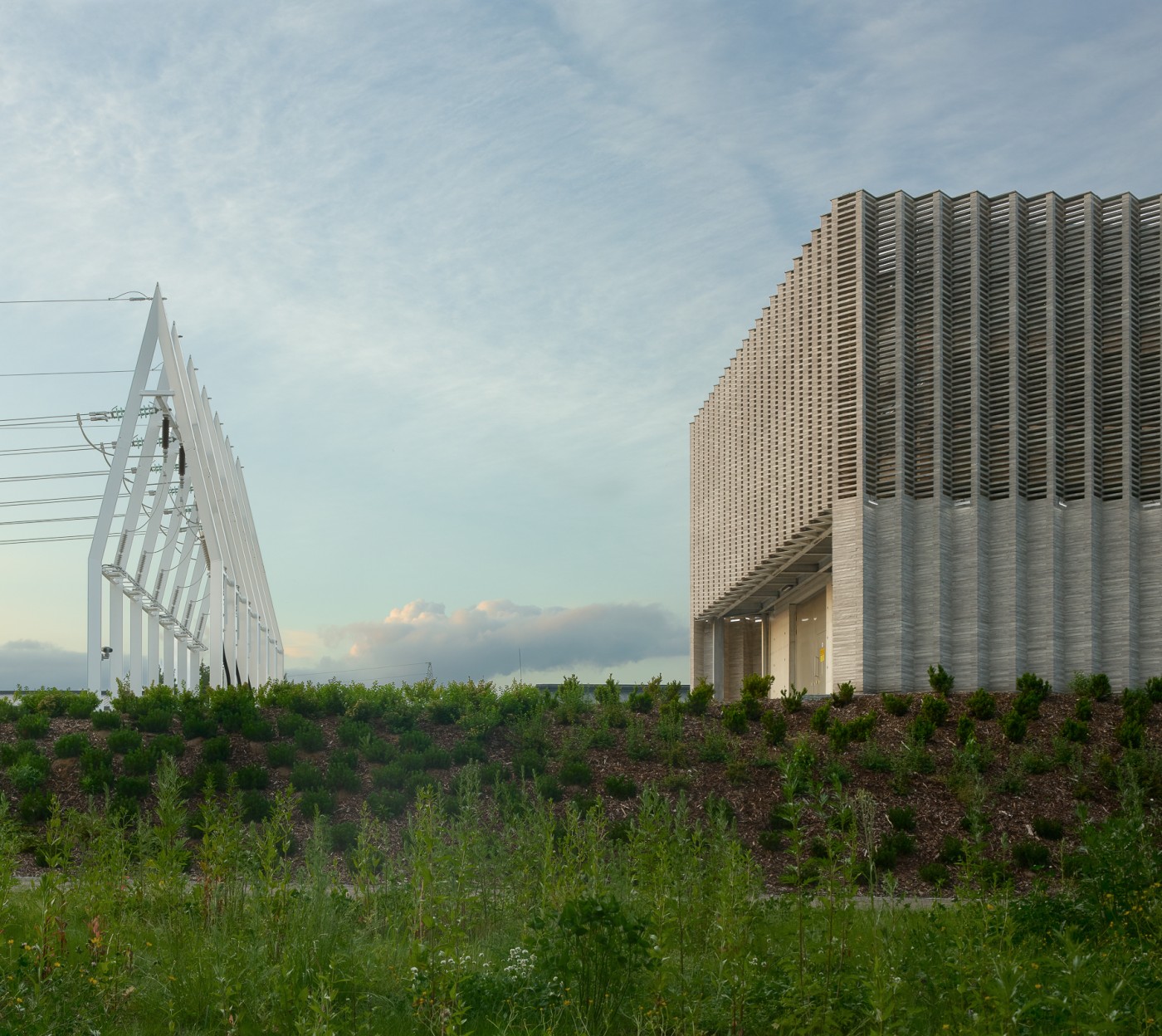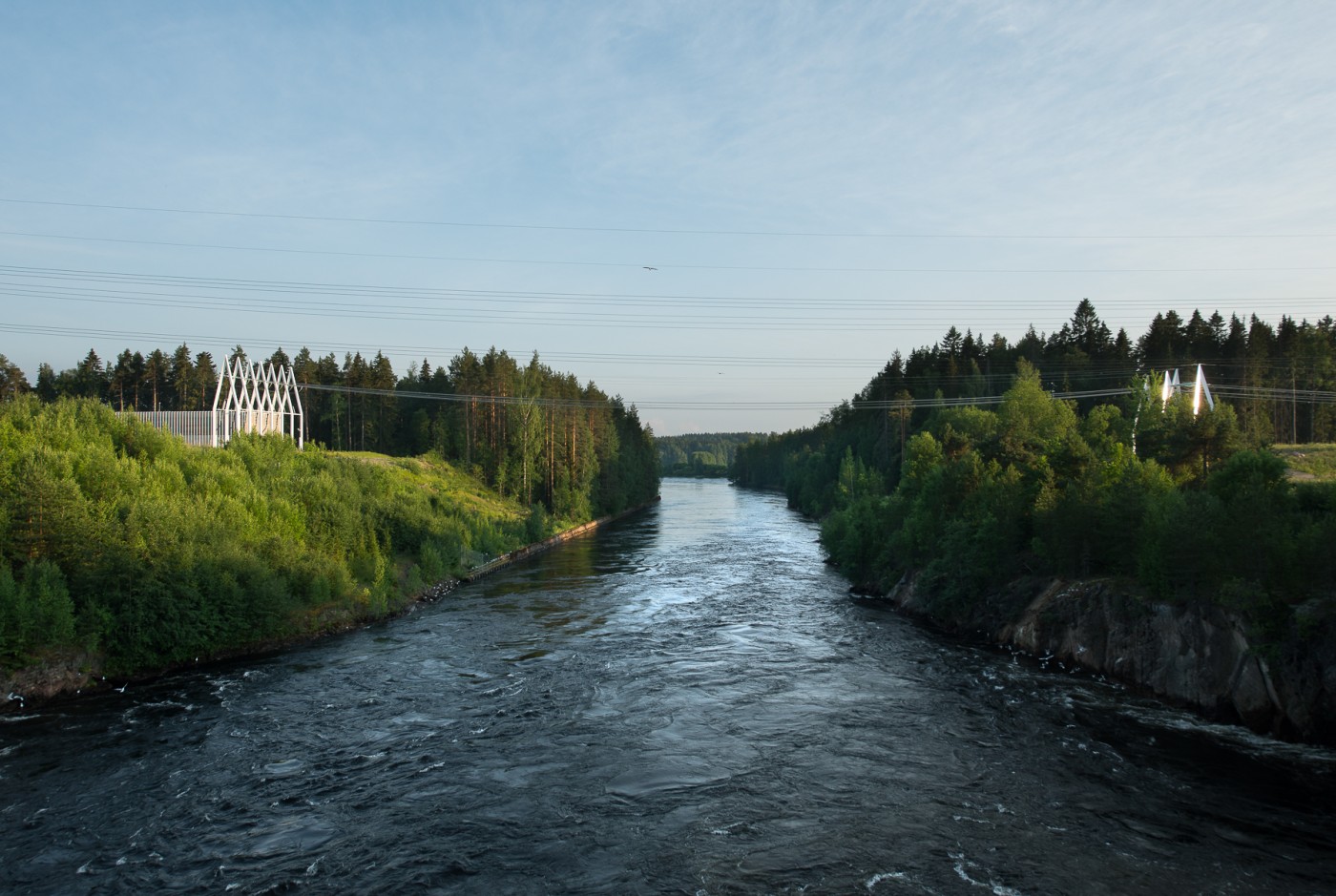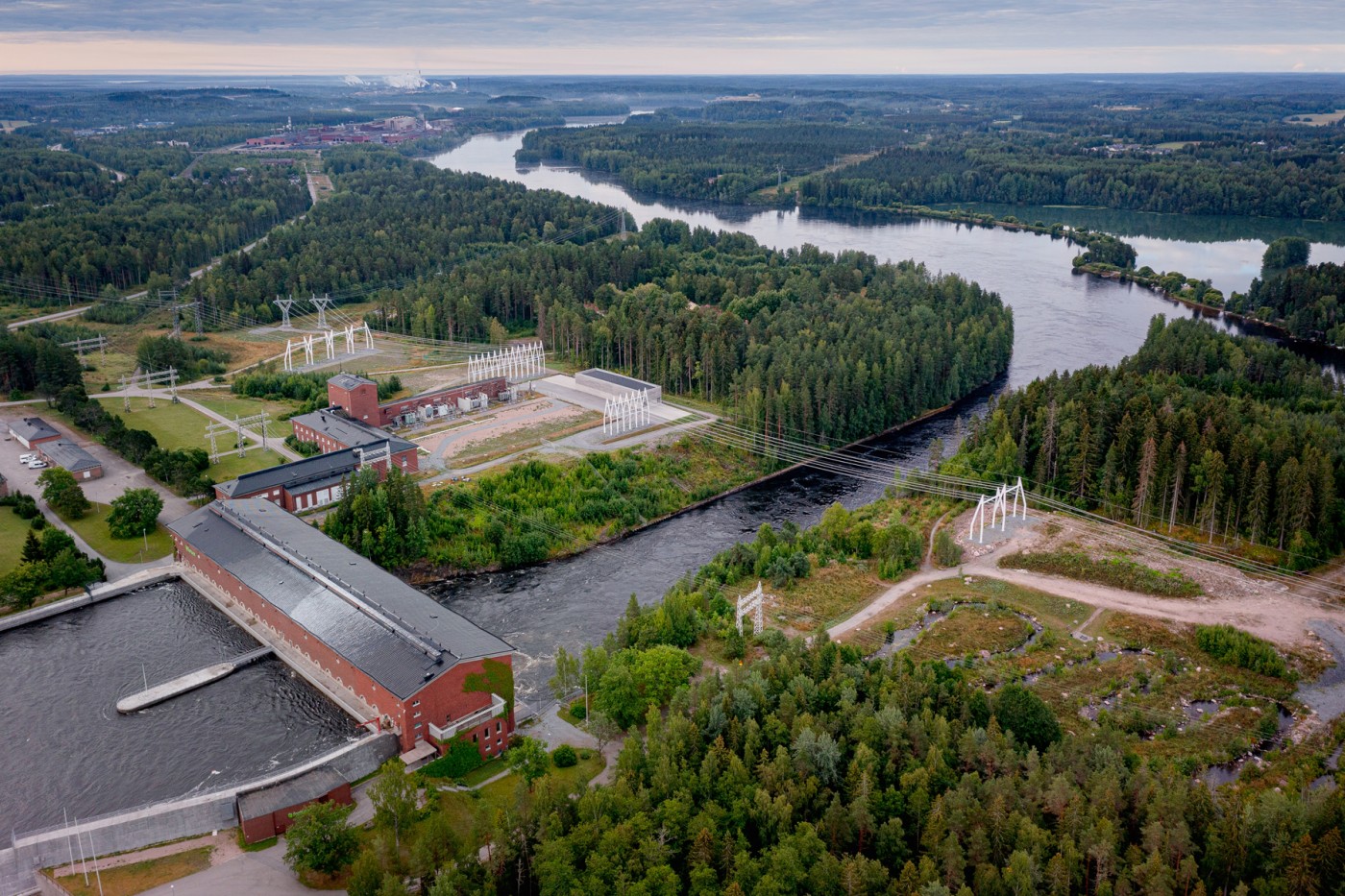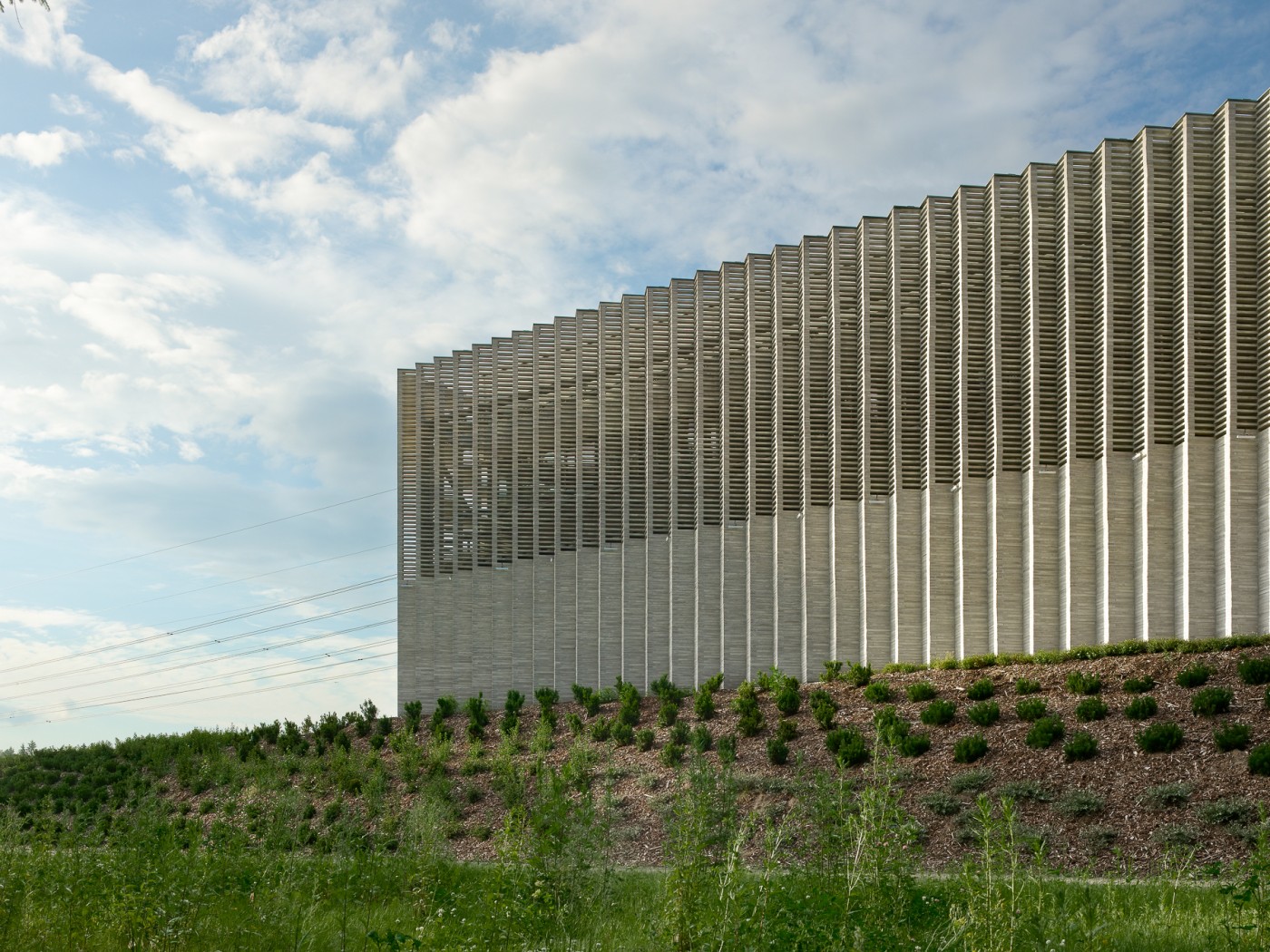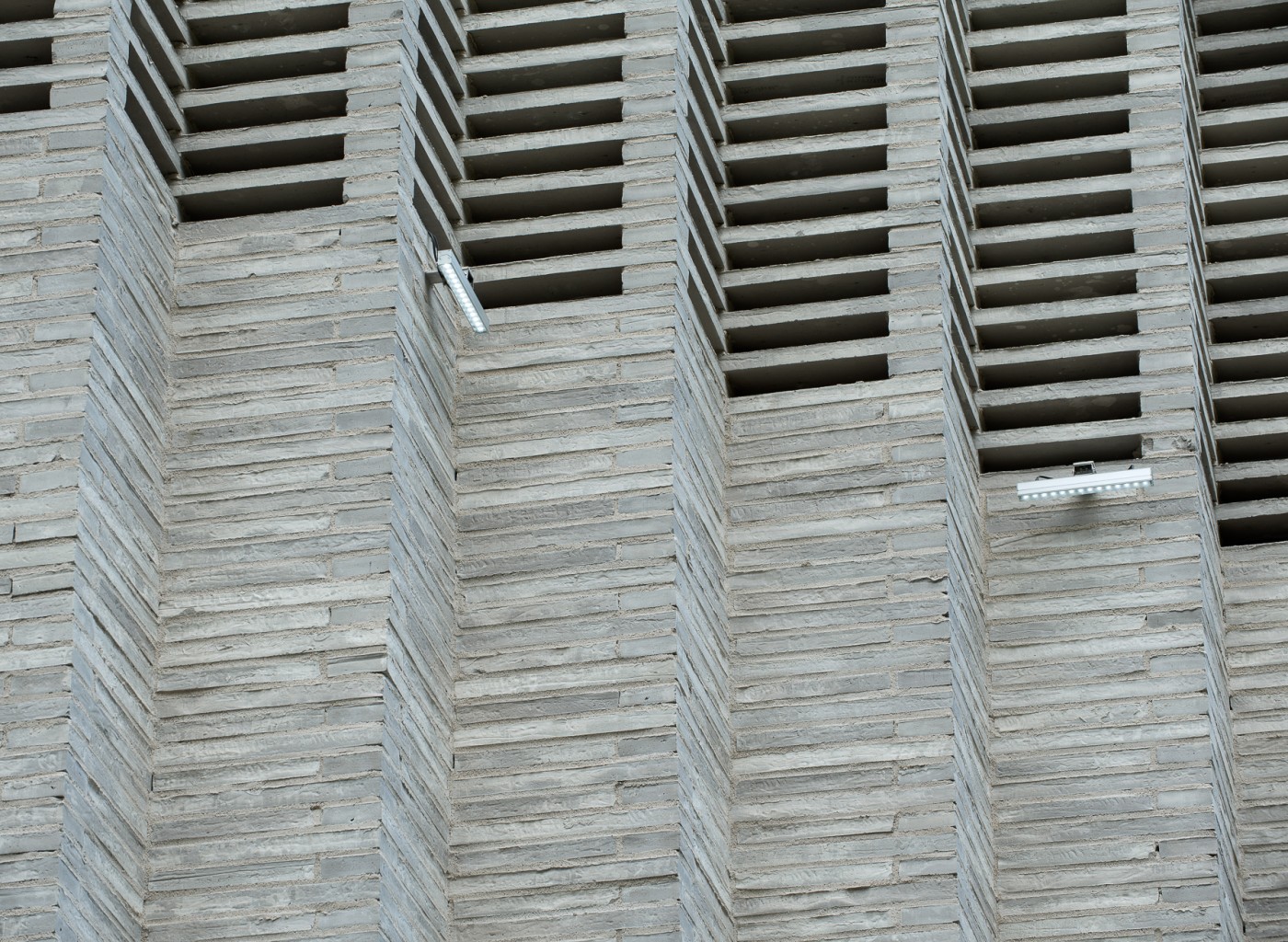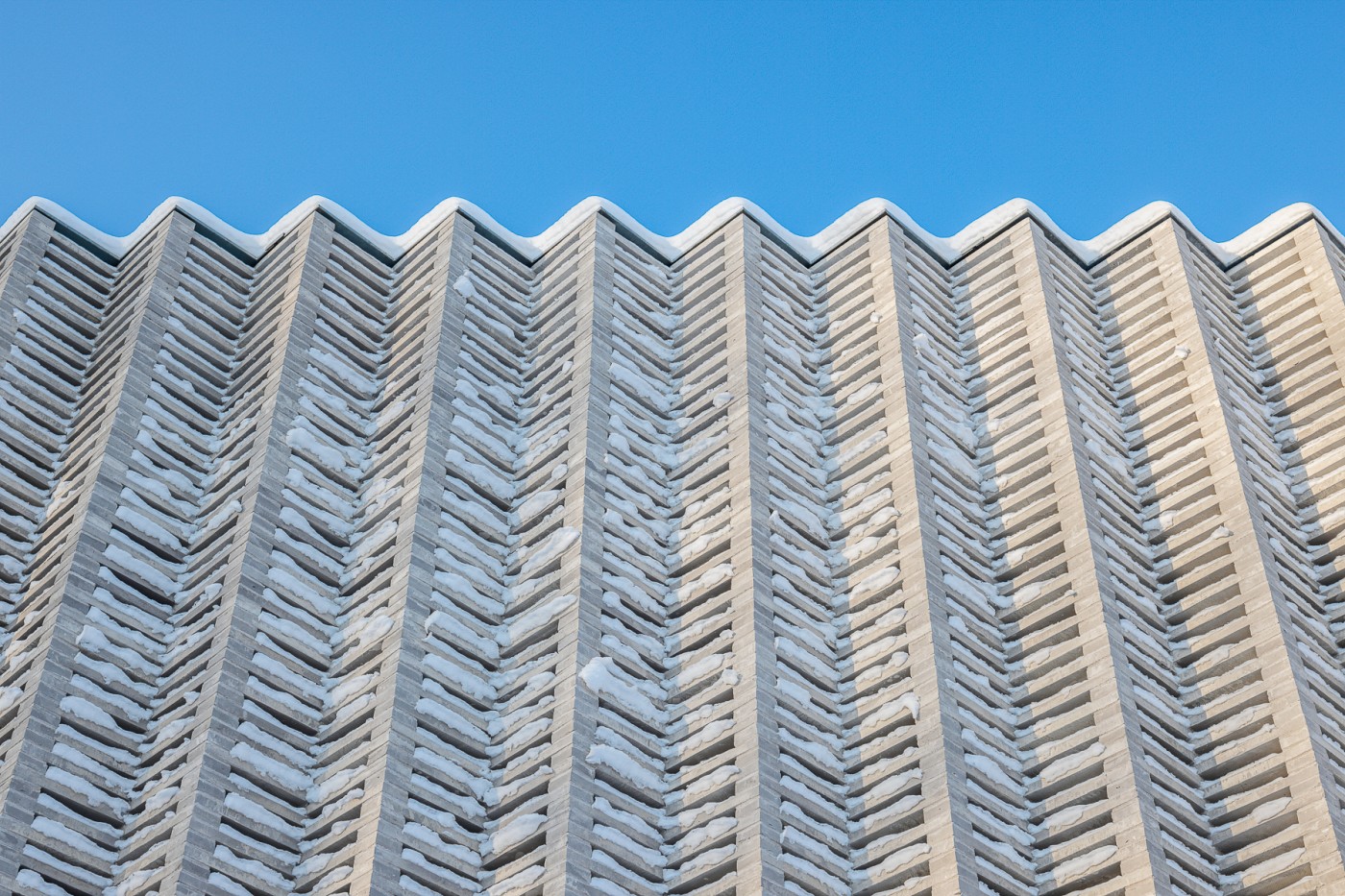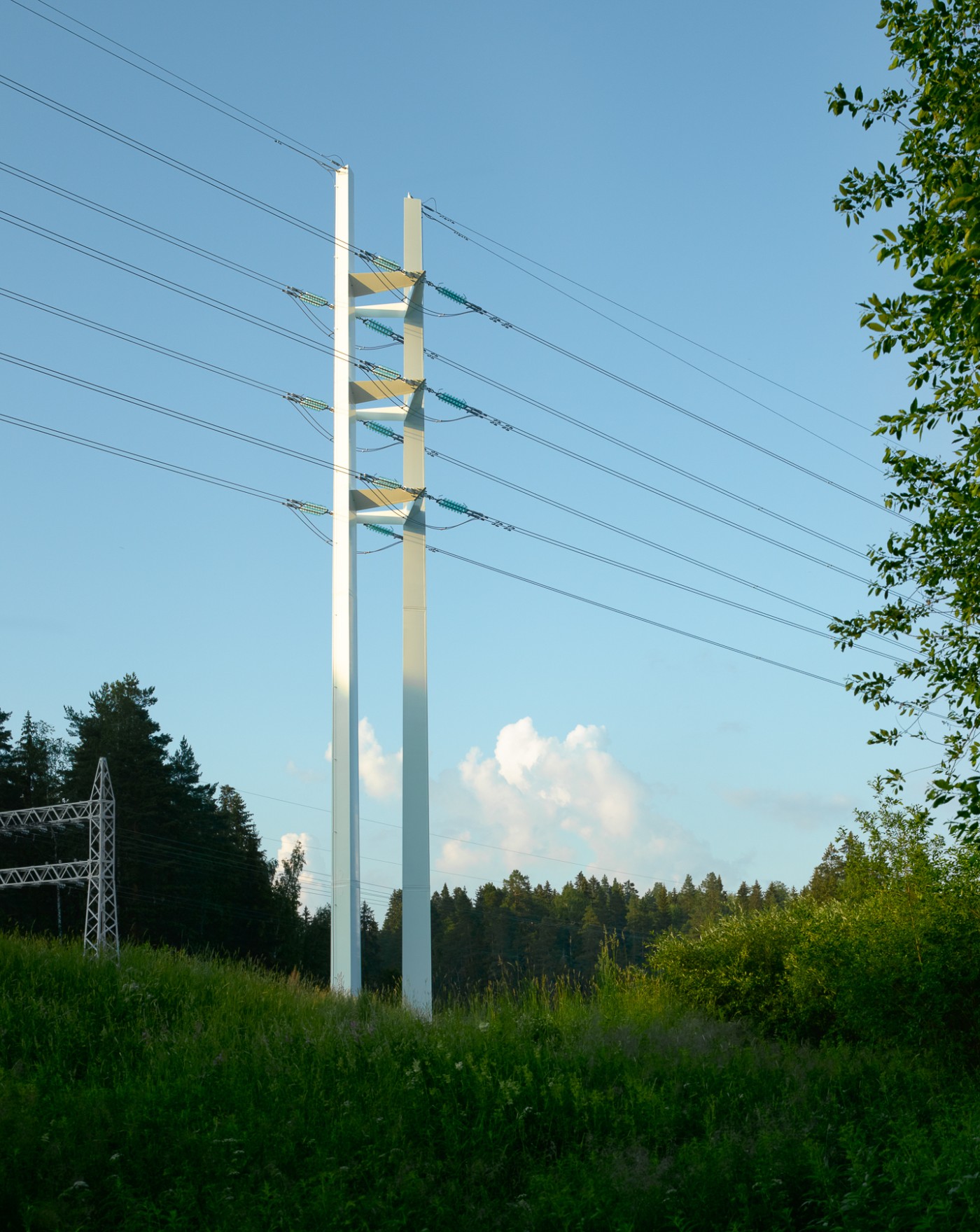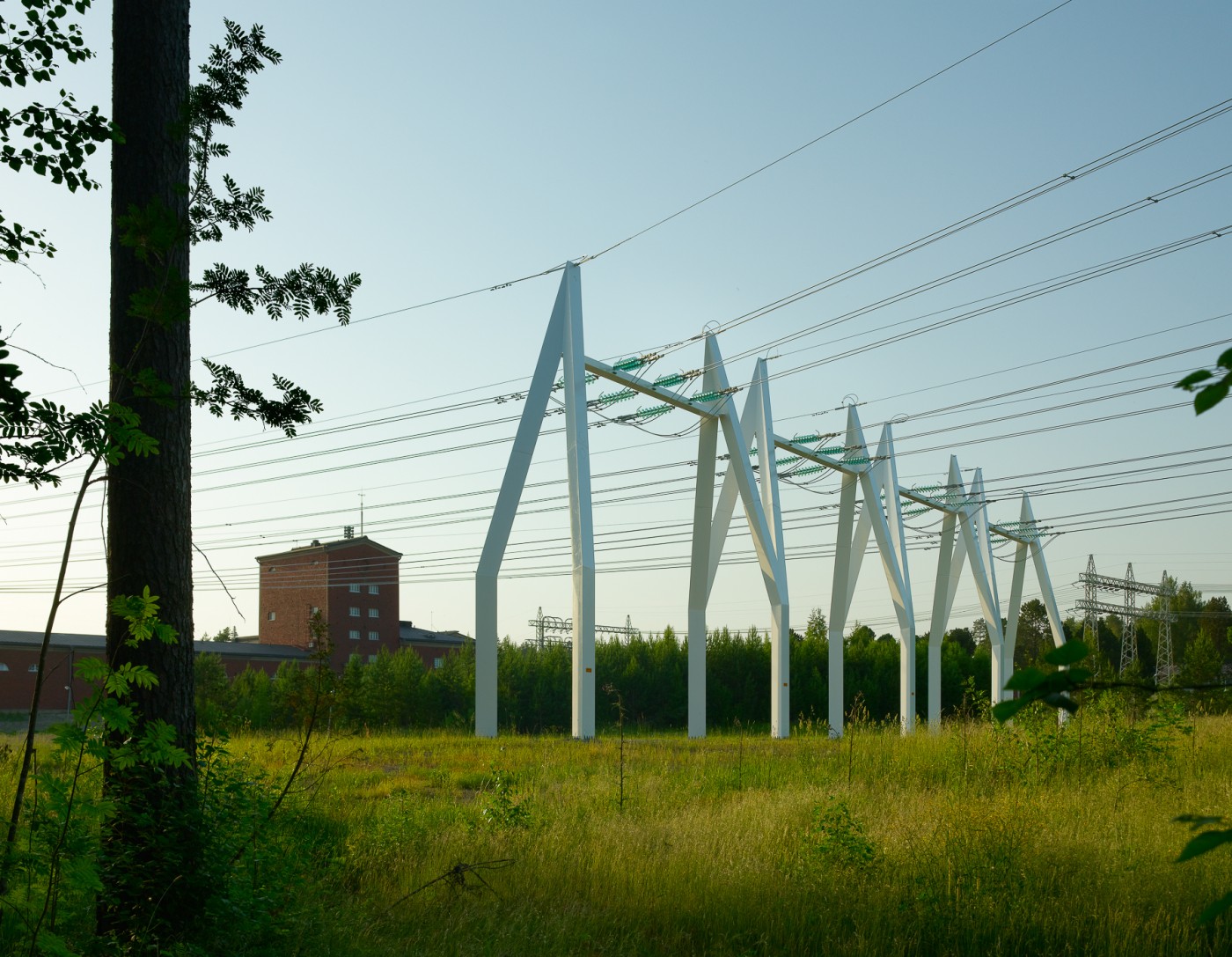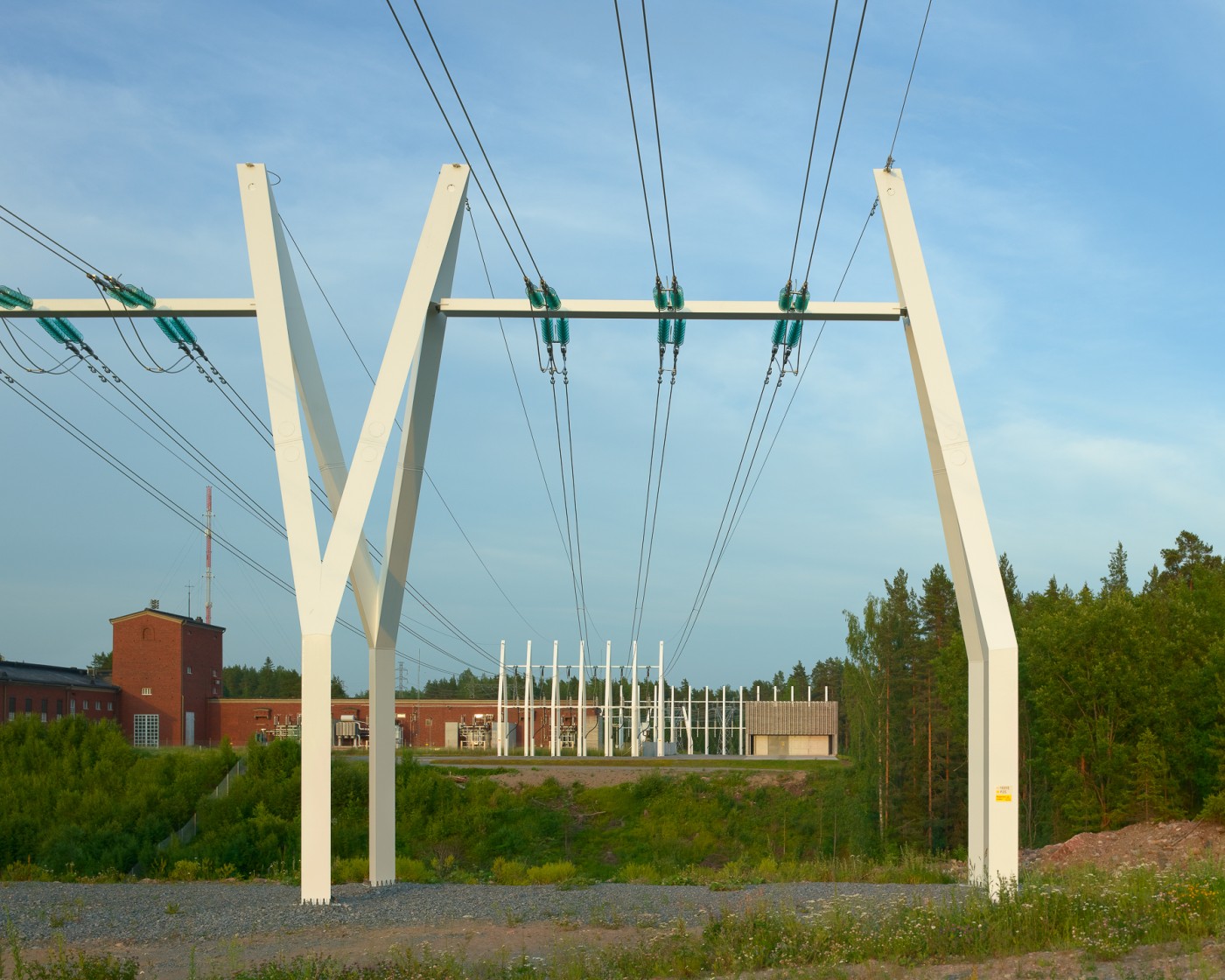The Finnish main grid's historical starting point was the 1920s substation and attached powerlines set in the national landscape of Imatrankoski Rapids in Eastern Finland. The award-winning modernisation project completely replaced the ageing infrastructure.
The architecture of the new switchgear building and the design of the new landscape pylons harmonise with the delicate, protected built and natural landscapes.
The Finnish main grid operator Fingrid Ltd wanted to respect their roots at this location by investing in the quality of design and construction of the modernisation project. It comprises a new switchgear building, three landscape power pylons, and two powerline terminals.
The building and the powerline terminals are close to the Imatrankoski Hydropower Plant, built in the 1920s. This was also the starting point of the Finnish main power grid. The plant and the grid have been updated over the years and continue functioning today. The landscape and the area's historical significance set the criteria for the design quality of the new substation facility.
The project crosses two tributaries of the River Vuoksi. The design goal was to balance the new structures with the surrounding built and natural landscape. Except for one tall tower, the new transmission structures are lower in height than the surrounding treetops. The old hydropower plant buildings were the primary factors in the positioning and layout of the new structures. The substation building is partially underground, making it as low as the nearest section of the old power plant.
The main technical goal of the project was to replace old air-insulated switchgear with modern gas-insulated switchgear housed inside a new building. New structures replaced old powerline towers to the east and west of the new substation. The removal of the air-insulated switchgear formed an open space between the new substation building and the existing buildings of the hydropower plant. This courtyard-like space has potential for future development.
The project features three different types of transmission structures. Architectural and spatial in form, they are built of triangular welded steel profiles in repetitive configurations. The towers and terminals are similar in form and structural principles, although different in specific functions. They reference the colour and geometries of old lattice-type powerline pylons in light grey steel that exist in the area.
The substation building has a concrete frame and double-skin facades. The outermost facade layer consists of long hand-made bricks laid in a zig-zag profile, a motif that the building fronts share with the triangular steel profiles of the new powerline towers and terminals. The material choice is based on the beautiful brick claddings of the old hydropower plant. The top of the masonry wall consists of a porous lattice pattern that lets light and air pass through. The inner layer of the double facade consists of in-situ and prefabricated concrete walls cut by a strip window visible behind the brick lattice. An auxiliary steel frame supporting the brick walls is fixed to the concrete walls.
A double-height entrance lobby inside the building provides access to the main process space via a low corridor. Stairs to the machine room and basement can also be reached from here. The main process equipment room and the lobby receive natural light via the window strip on the inner concrete layer of the double-skin external walls.
The design breaks apart aspects of the existing built environment and reassembles them in a new abstract form. The rhythmical brick-clad classicist facades of the existing power plant buildings inspired the new substation facades and powerline structures. The derived design language gives the new project a unified identity and places it in the context.
